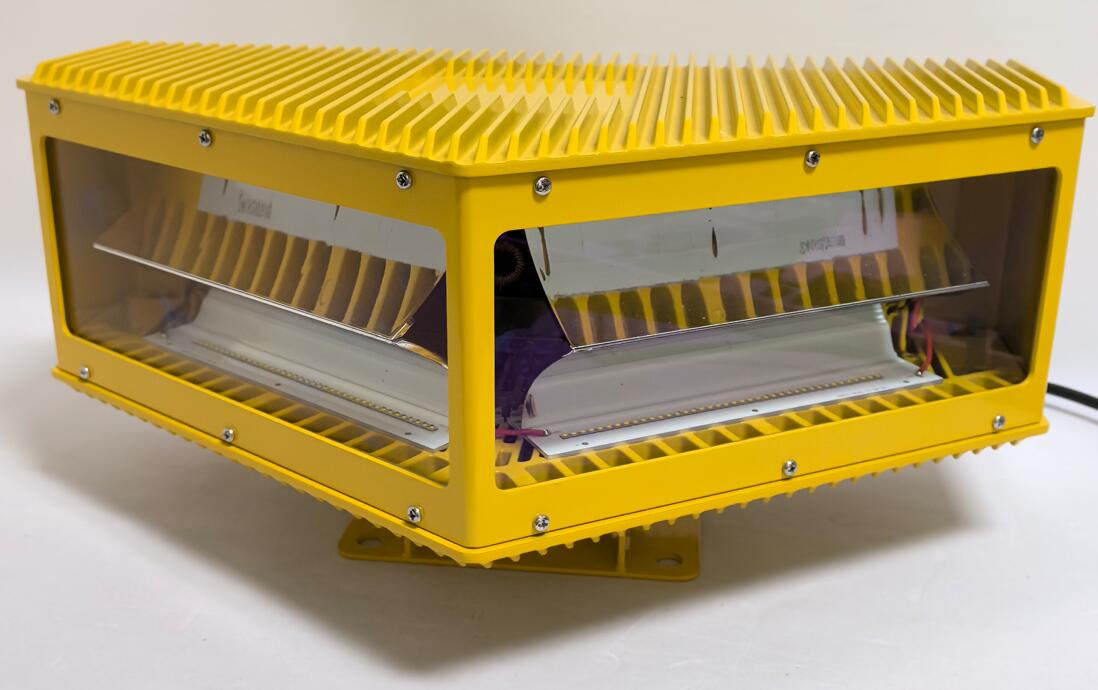Aviation Obstruction Lamp: Illuminating the Path to Safer Skies
In the complex tapestry of modern aviation safety, aviation obstruction lamp systems form a critical thread that protects aircraft from ground-based hazards. These specialized lighting solutions have evolved from simple warning beacons to sophisticated, intelligent systems that adapt to various environmental conditions. This article examines the crucial role of aviation obstruction lamp technology in preventing collisions, explores current industry standards, and highlights emerging innovations that are reshaping aerial hazard marking.
The Essential Role of Aviation Obstruction Lamps
Aviation obstruction lamp systems serve as the first line of defense against structural collisions by:
Providing Visual Reference Points: Helping pilots identify potential hazards during all phases of flight

Enhancing Situational Awareness: Improving navigation in poor visibility conditions
Complying with Safety Regulations: Meeting mandatory marking requirements for tall structures
| Aviation Obstruction Lamp |
The absence of proper obstruction lighting could lead to:
Increased risk of mid-air collisions
Difficulty in low-visibility navigation
Regulatory non-compliance penalties
Higher insurance liabilities for structure owners
| Aviation Obstruction Lamps |
Classification of Aviation Obstruction Lamps
1. Type A: Low-Intensity Red Lamps
Steady or flashing red illumination
For structures below 45 meters
Common applications: small buildings, construction cranes
2. Type B: Medium-Intensity Systems
White strobes (Type B) or red flashing (Type C)
For structures 45-150 meters
Typical installations: telecom towers, power line markers
3. Type D: High-Intensity Warning Systems
Powerful white strobes visible up to 20 nautical miles
For structures exceeding 150 meters
Essential for skyscrapers, tall broadcast antennas
4. Hybrid Lighting Solutions
Combine multiple lamp types for optimal visibility
Feature adaptive lighting patterns
Used in complex urban environments
Technological Breakthroughs in Obstruction Lighting
Modern aviation obstruction lamp systems incorporate several advanced features:
Intelligent Light Control:
Automatic brightness adjustment based on ambient conditions
Weather-responsive activation systems
Advanced Monitoring Capabilities:
Real-time performance tracking
Predictive failure analysis
Remote diagnostics and configuration
Energy Efficient Designs:
Ultra-low power LED arrays
Solar-hybrid power options
Heat-dissipating materials
Enhanced Durability:
Corrosion-resistant housings
Vibration-proof mounting systems
Extreme temperature operation (-40°C to +85°C)
Global Standards and Certification
Aviation obstruction lamp systems must comply with rigorous international standards:
ICAO Annex 14:
Specifies light intensity requirements
Defines placement guidelines
FAA AC 150/5345-43J:
Details photometric requirements
Establishes performance benchmarks
EN 61820 (EU Standard):
Covers electrical safety
Addresses environmental resilience
Key certification marks include:
FAA certification for US installations
EASA approval for European operations
CE marking for EU compliance
ATEX certification for hazardous areas
Installation and Maintenance Protocols
Proper implementation of aviation obstruction lamp systems requires:
Pre-Installation Planning:
Comprehensive site survey
Lighting requirement analysis
Obstruction mapping
Professional Installation:
Certified installation teams
Precision alignment
Weatherproof connections
Ongoing Maintenance:
Scheduled cleaning of optical surfaces
Regular electrical inspections
Prompt replacement of degraded components
Documentation Management:
Maintenance logs
Performance records
Compliance documentation
Future Directions in Obstruction Lighting
The aviation obstruction lamp industry is moving toward:
Smart City Integration:
Network-connected lighting systems
Air traffic-responsive activation
Advanced Materials:
Self-cleaning surface treatments
Nano-coated optics for better light transmission
Energy Harvesting:
Wind-assisted power generation
Thermal energy conversion
Augmented Reality Interfaces:
Pilot HUD integration
Digital twin synchronization
Aviation obstruction lamp systems continue to play an indispensable role in global aviation safety as our urban landscapes grow increasingly vertical. The ongoing technological evolution of these systems demonstrates the aviation industry's commitment to preventing collisions through innovation and strict adherence to safety standards. As we look to the future, aviation obstruction lamp technology will undoubtedly incorporate more intelligent features, greater energy efficiency, and enhanced reliability to meet the challenges of tomorrow's airspace.
